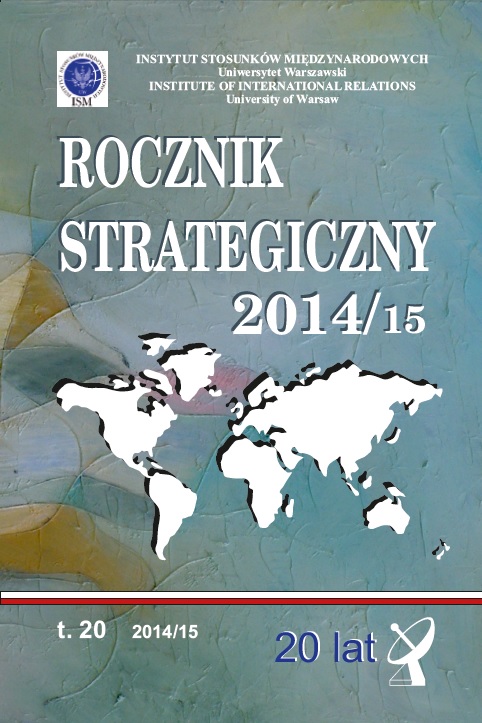Obrona kolektywna NATO. Stała misja i zmienny kontekst strategiczny
NATO'S COLLECTIVE DEFENCE. THE CORE MISSION AND THE CHANGING STRATEGIC CONTEXT
Author(s): Robert KupieckiSubject(s): Politics / Political Sciences, Politics, International relations/trade
Published by: Wydawnictwo Naukowe Scholar Sp. z o.o.
Keywords: Article 5; defence budgets; European Union; NATO; collective defence; cooperative security; crisis management; strategic concept; transatlantic relations; Washington Treaty
Summary/Abstract: Collective defence has always been the core function of NATO, and the uniqueone, since the Allies have no alternative and cannot seek other means of defencethrough other international organizations. Founded on the provisions of Article 5of the Washington Treaty, together with corresponding resources, it should be consideredas the “referential” mission for all other NATO obligations in the politicalmilitaryfield, including crisis management, cooperative security and partnershipwith non-member states. The post-Cold War extension of geographical and functional fields of NATO operations did not change this basic fact, although obviously modern practice points to a rather broader definition of Art. 5 commitments than before,and NATO defines its military goals in broader terms than collective defence.Against the views of structural reformulation of the Alliance’s mission in an environmentdeprived of any territorial threat, the author argues that, without retainingcollective defence as key responsibility, and as a “resources generator”, this extensionwould not have been possible. The new context for modern understanding ofcollective defence, one that confirms its perpetual validity, is the 2014 Russian annexationof Crimea, and its subsequent aggression against Ukraine. It sparked notonly a NATO military response to reassure its Eastern Allies, but also makes it necessaryto undertake a larger task of readapting its collective defence approach, bothto traditional military threats and to “hybrid warfare”.
Journal: Rocznik Strategiczny
- Issue Year: 2014
- Issue No: 20
- Page Range: 313-327
- Page Count: 14
- Language: Polish

